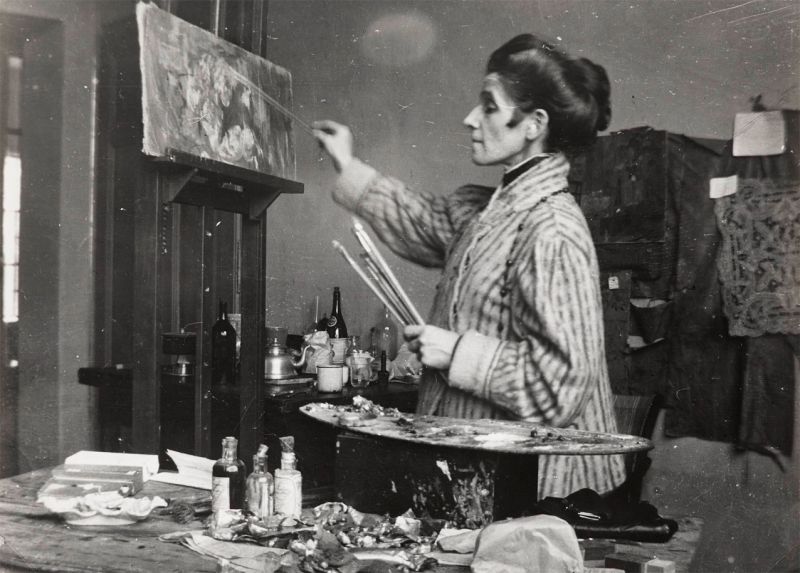Olga Boznańska. Kraków – Munich – Paris
Mediathek Sorted
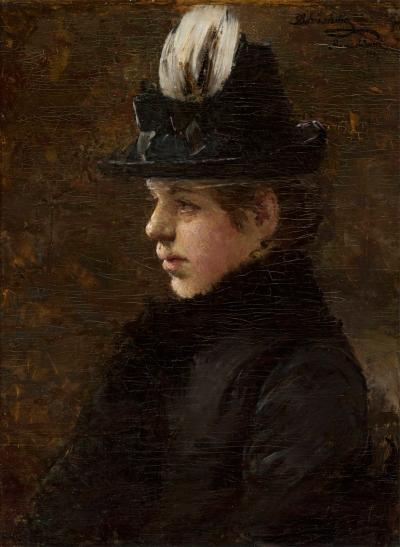
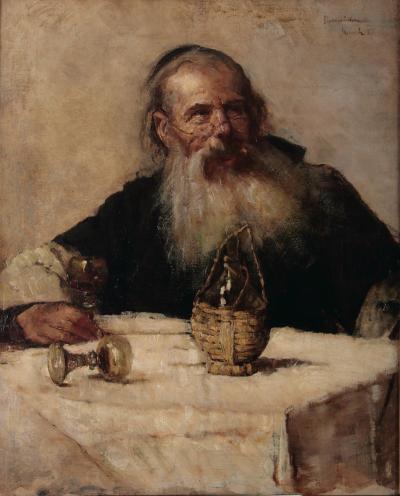
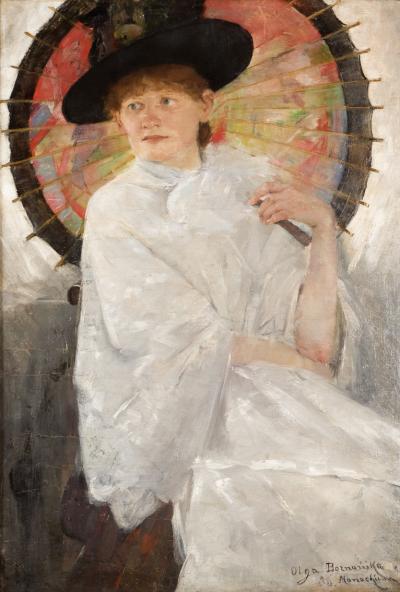
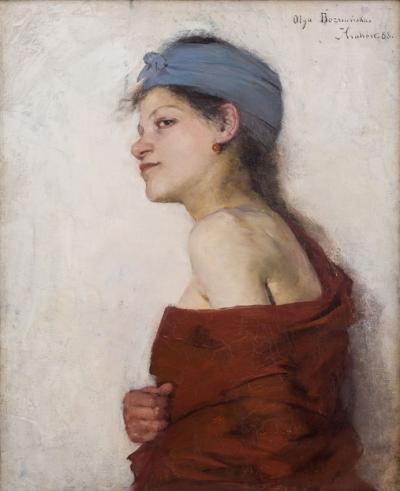
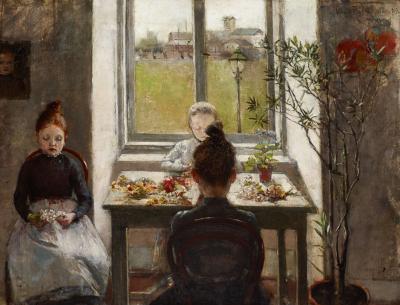
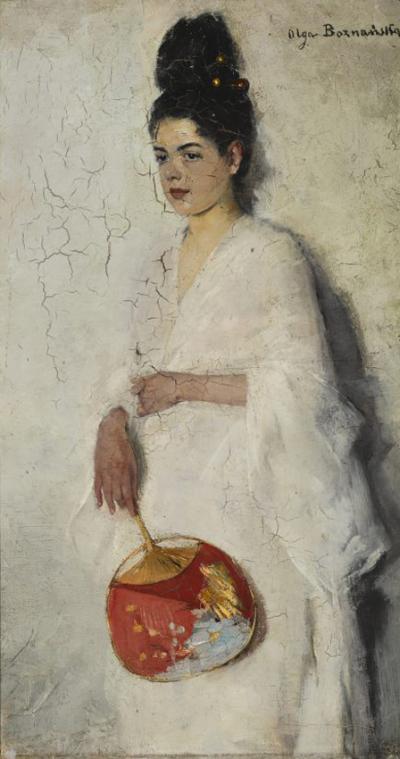

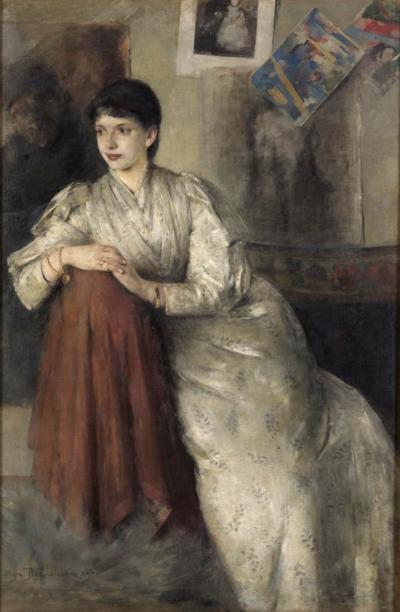
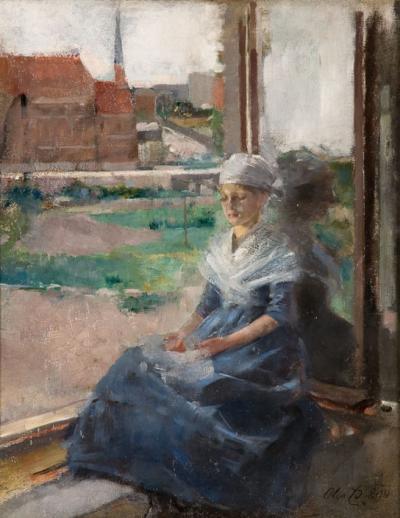
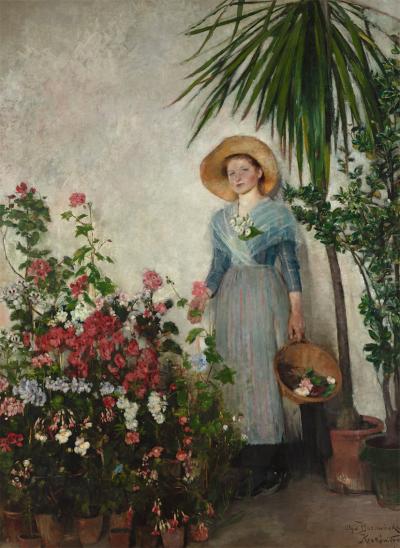
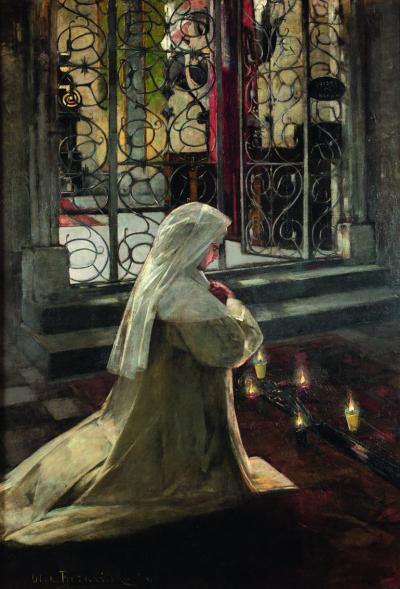
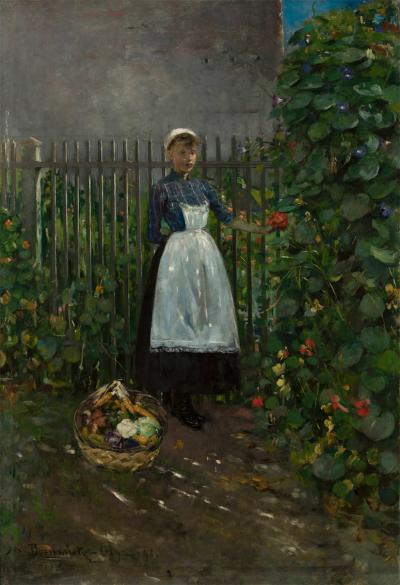
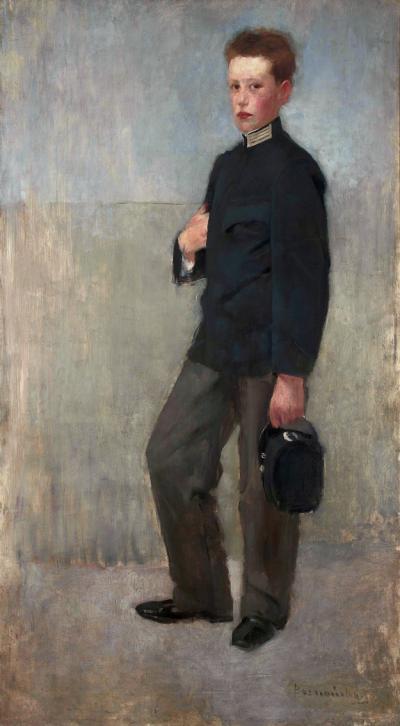
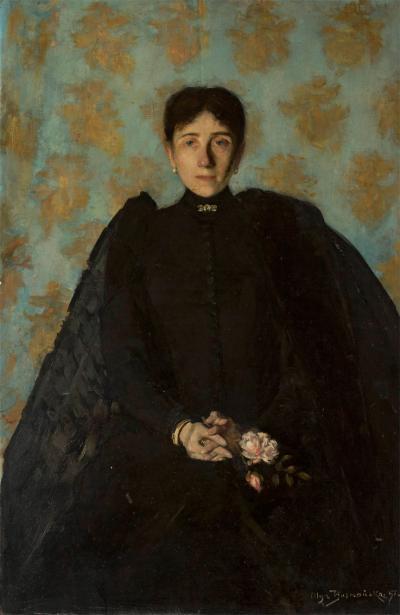
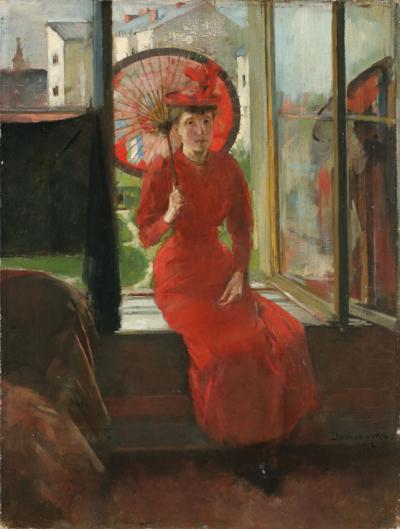
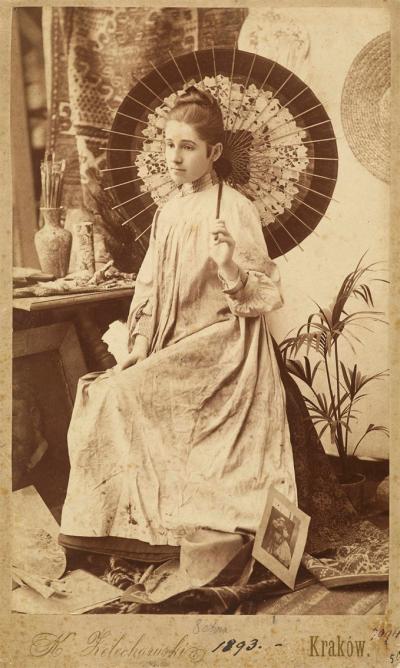
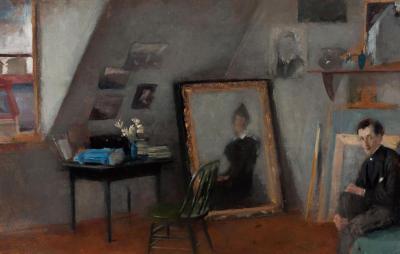
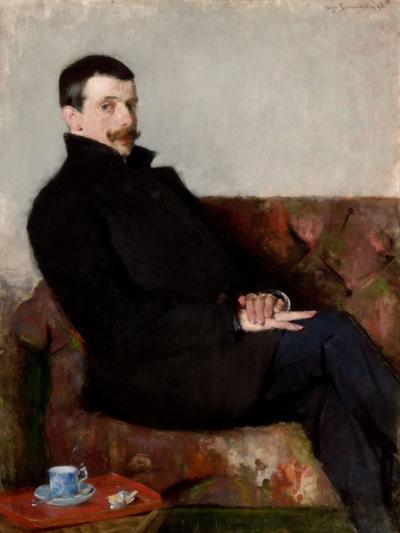
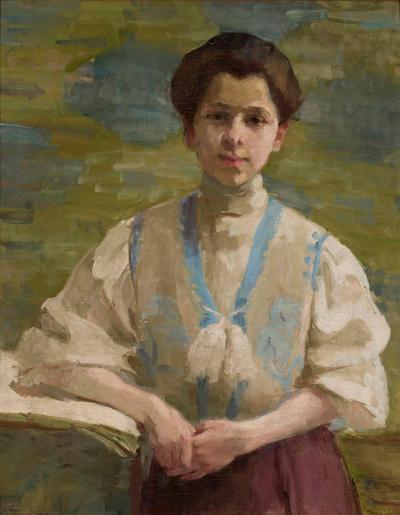
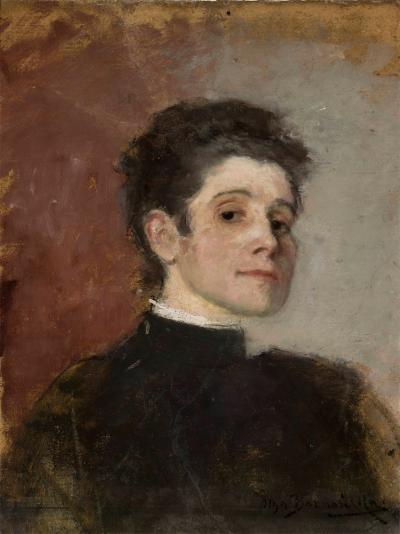
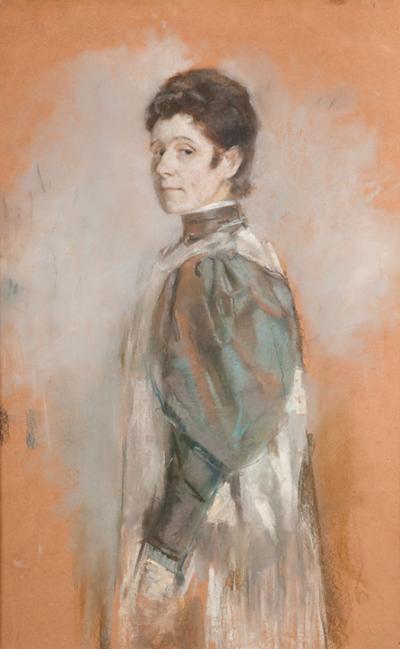
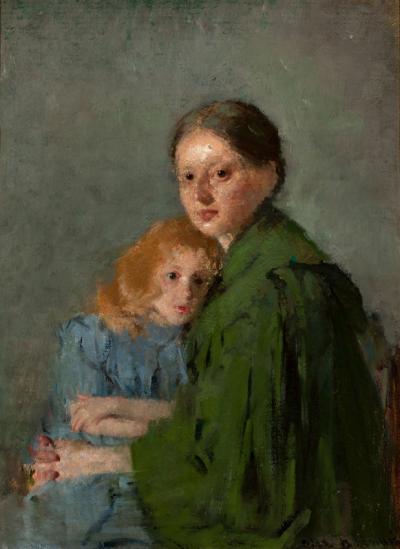
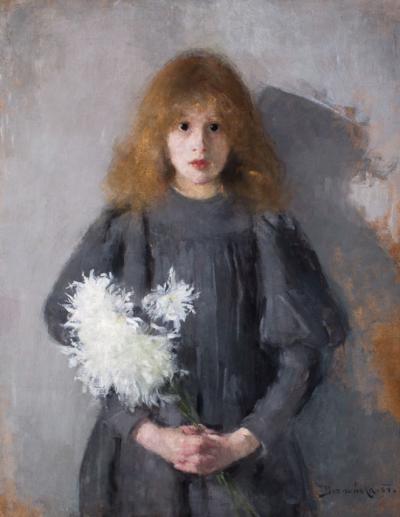
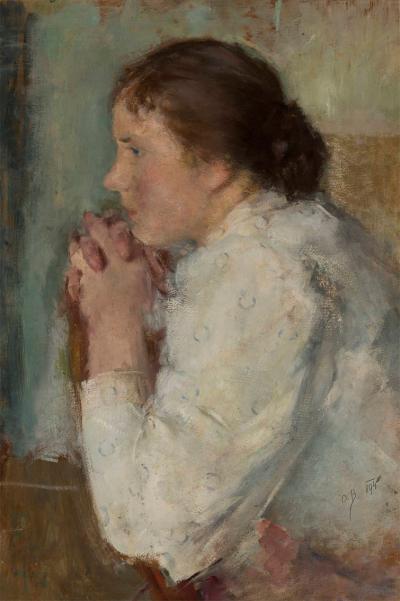
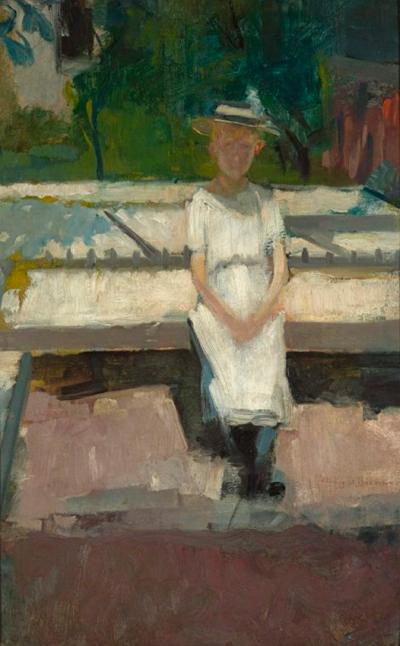
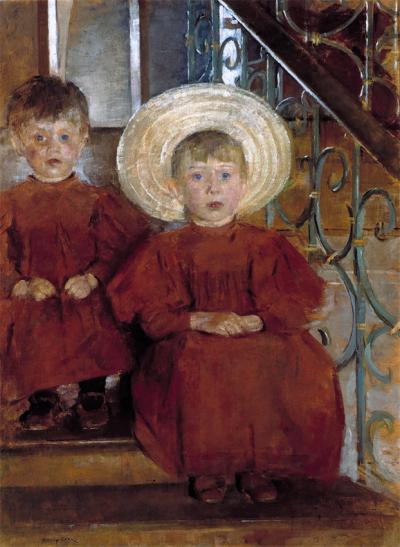

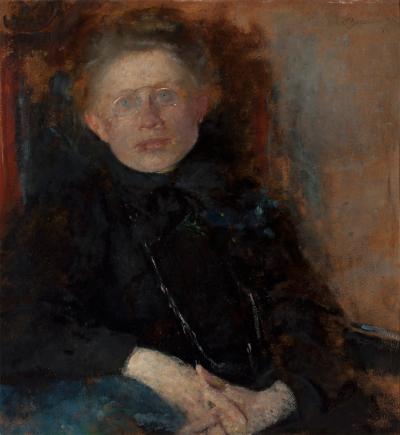
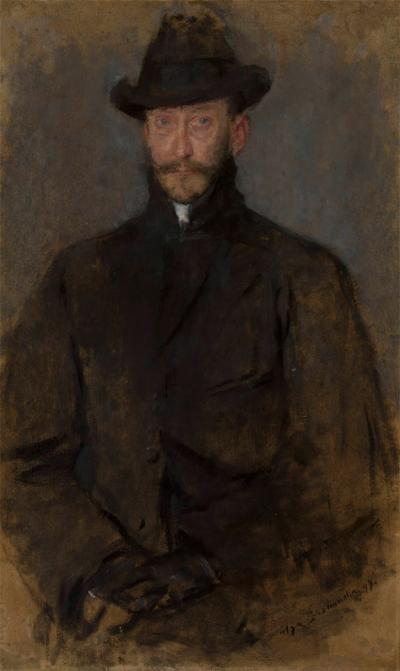
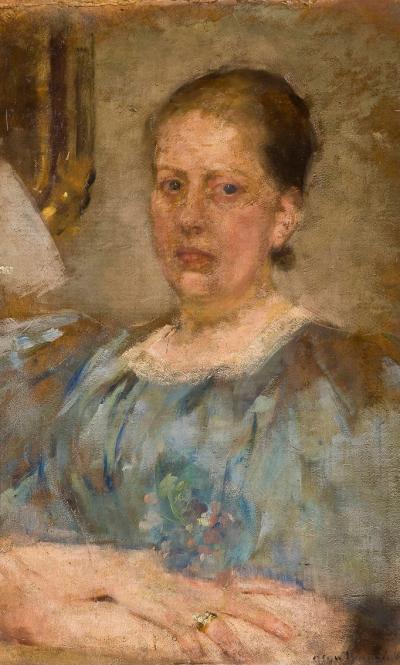
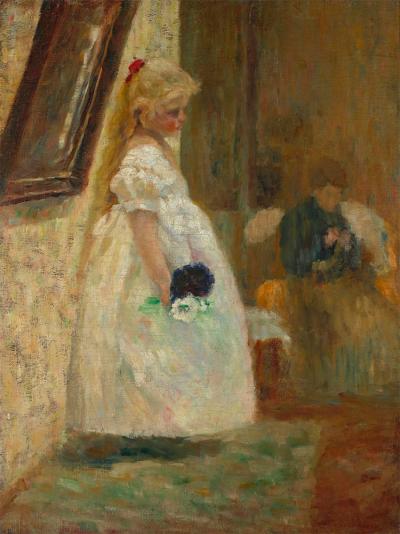

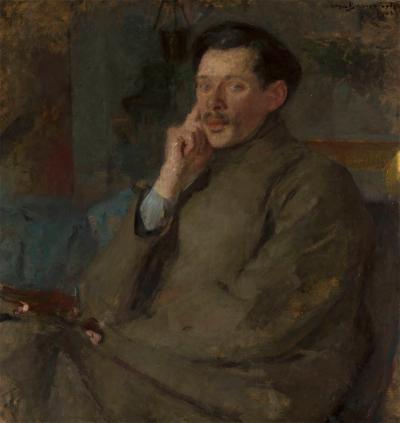
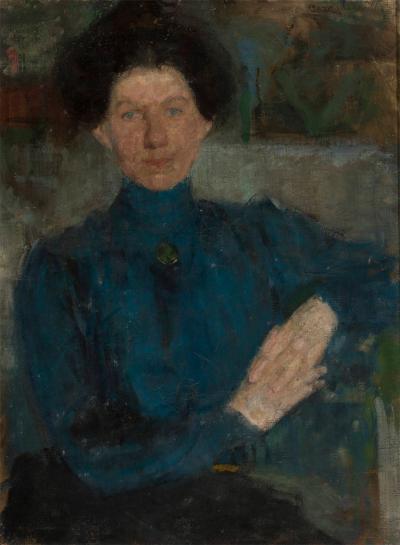
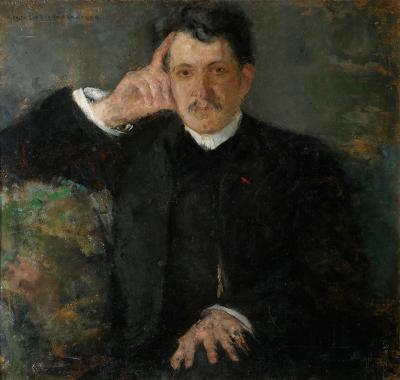
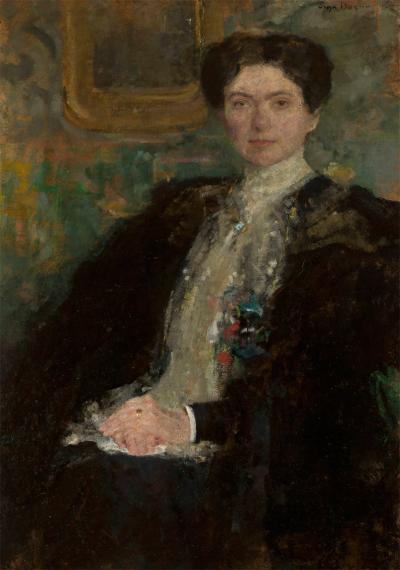
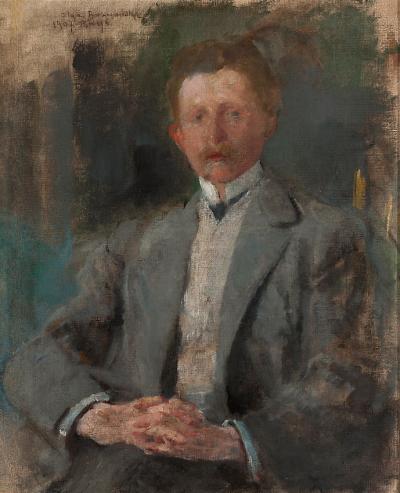
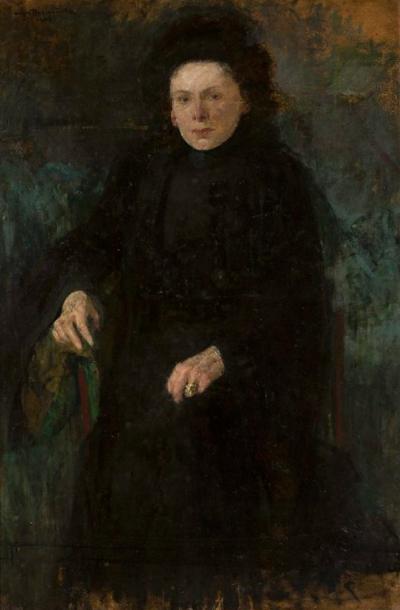
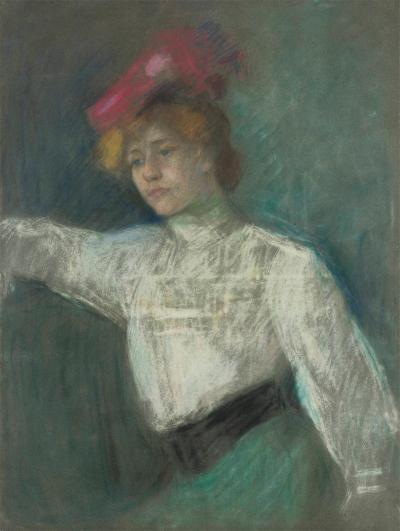
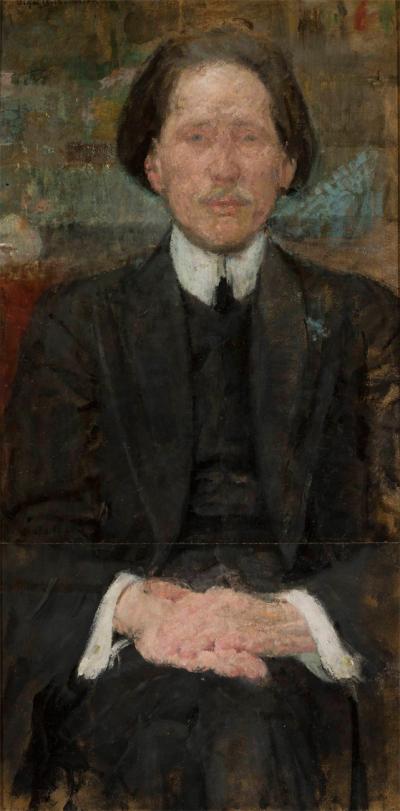


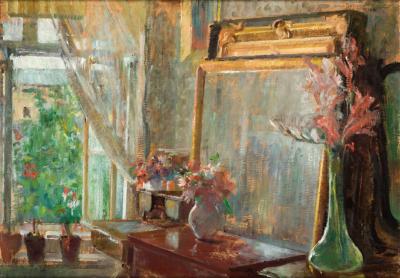
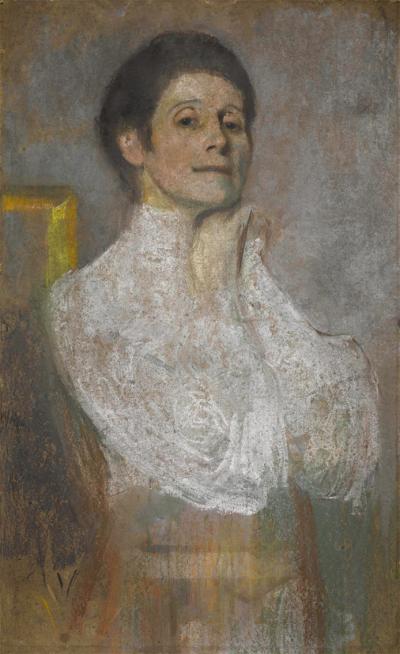
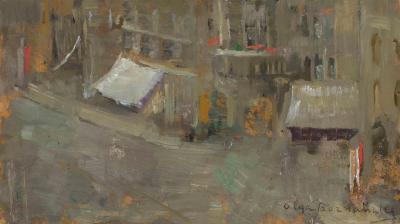
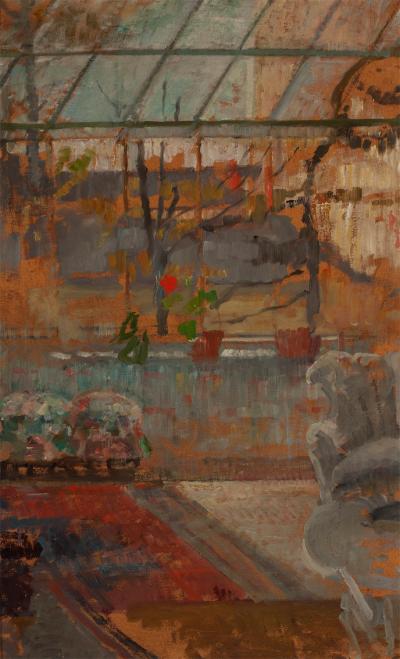
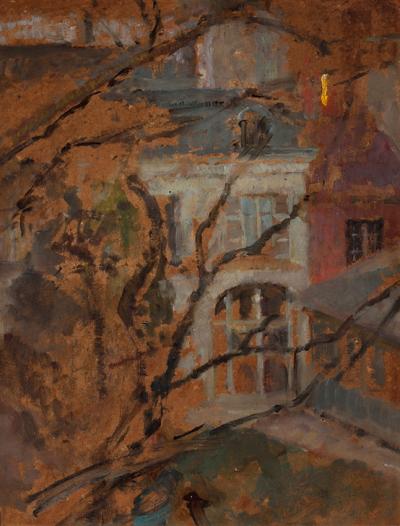
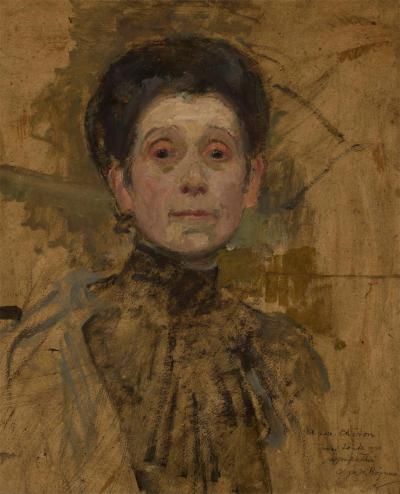
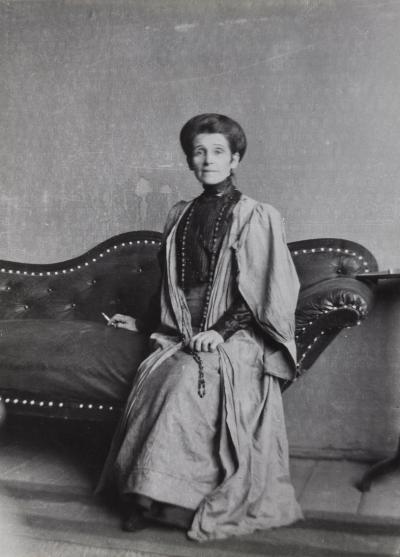
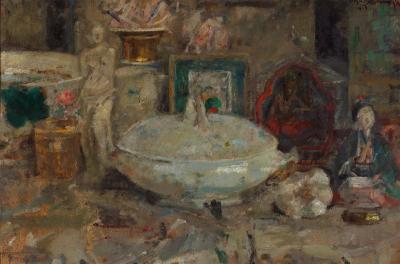
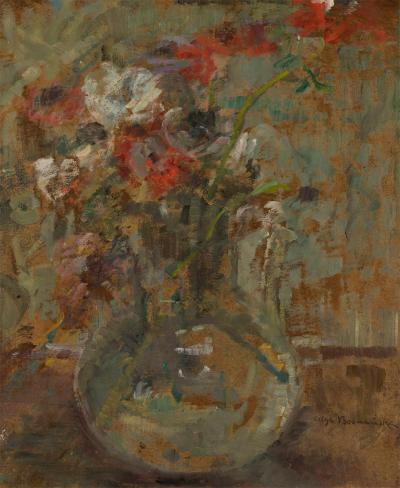
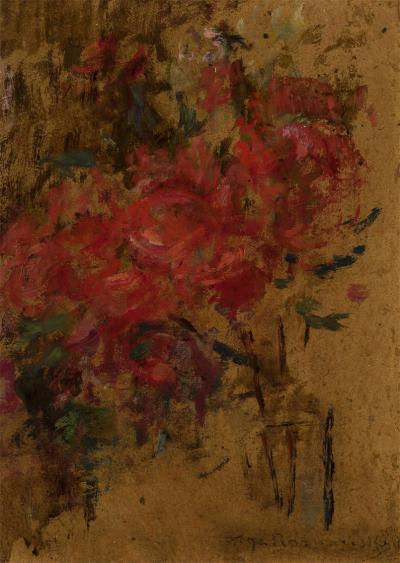
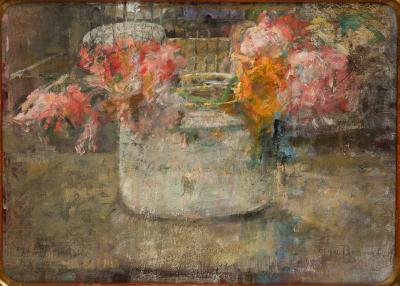

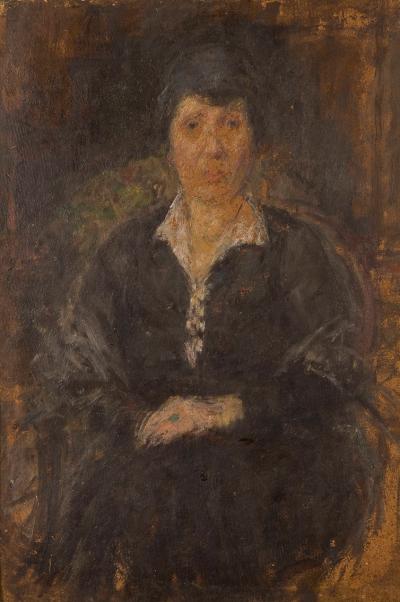
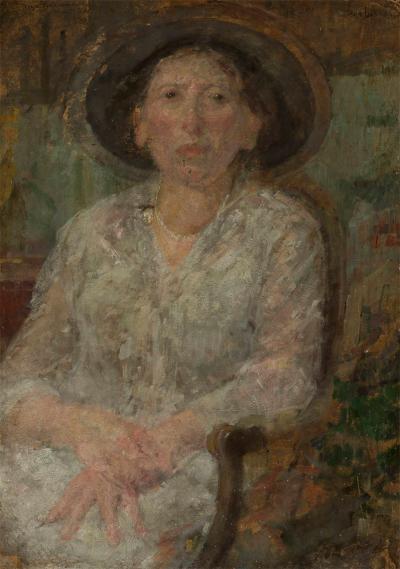
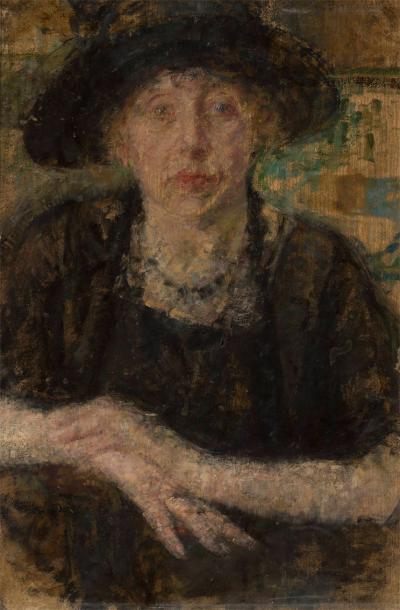
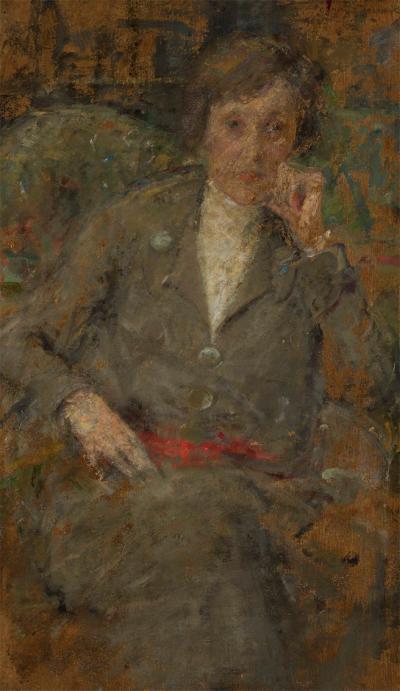
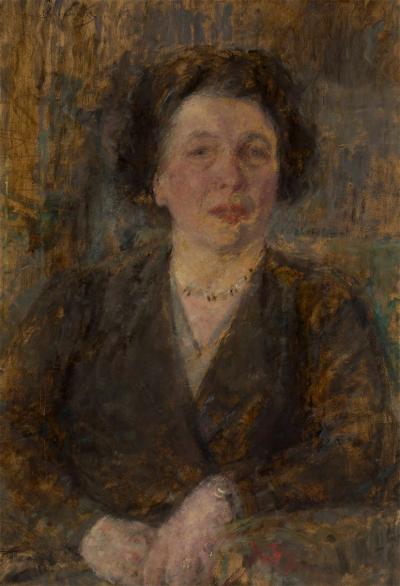
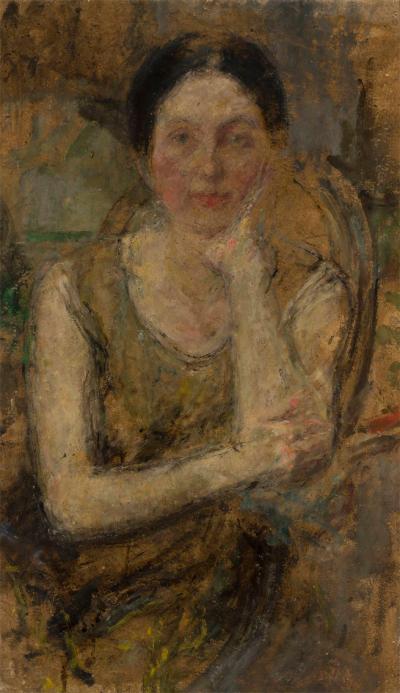


However, we see the painter searching for a final form in pictures resembling genre motifs. For the “Breton Woman“ (1890, Ill. 9), where an urban landscape can once more be seen through an open window, pictures with corresponding themes from the School of Pont-Aven – those of Émile Bernard, Paul Gauguin and Vincent van Gogh – scarcely come into question as role models. Instead her open-air paintings are closer to those of Uhde and Bilińska. The huge format painting, “In the Orangery” (1890, Ill. 10) and the large portrait of a “Girl with a Vegetable Basket” (1891, Ill. 12) show pensive young women, painted against a colourful open-air background, whose objects, a basket of flowers and vegetables, are nothing more than props. Another wall-filling picture, “Good Friday” (1890, Ill. 11), that shows a kneeling nun praying before the cross in the Chapel of the Blessed Salome in the Kraków Franciscan Church/Kościół Franciszkanów.[21] The two salon-format pictures completed in Kraków, “In the Orangery” and “Good Friday” could be seen in the same year in the TPSP. It is almost as if Boznańska wanted to present all her accomplishments to the general public: genre, flowers and open-air paintings, interior, sophisticated perspectives, the various effects of light, not forgetting her large format works.
In the same year she returned to making portraits. Her “Portrait of a Boy in School Uniform” (ca. 1890, Ill. 13) reveals her once more as a portrait painter at the height of her powers. Her concentration on a rich palette of grey tones with the red complexion as a lively contrast, once more documents her closeness to Whistler. A clearly defined figure before a background, which is really only one colour, is however reminiscent of Manet’s “Flute Player” (“Le fifre”, 1866, Musée d'Orsay), or the portrait in similar colours of a 16-year old boy, Léon in the “Breakfast in the Studio” (“Le déjeuner dans l'atelier”, 1868, Neue Pinakothek, Munich), or the grey and blue coloured soldiers in front of a grey wall in the “Execution of Emperor Maximilian of Mexico” (1868/69, Kunsthalle Mannheim). Her portraits of ladies, whose faces and hands stand out prominently against the blackness of the dresses, their hats and hairdos, are once more orientated on a picture by Whistler, the “Arrangement in Black: The Lady in the Yellow Buskin” (ca. 1883, Philadelphia Museum of Art): these are the portrait of Boznańska’s mother (ca. 1890, National Museum of Stettin/Muzeum Narodowe w Szczecinie), the portrait of a woman on horseback (1891, National Museum of Kielce/Muzeum Narodowe w Kielcach), and the unidentified “Portrait of a Woman” (1891, Ill. 14). This is not only unusual for the vivid wallpaper in the background. The excellent presentation of the hands holding a rose twig as if by accident, would arouse much comment two years later at the 1893, Greater Berlin Art Exhibition, where the picture was shown along with “In the Orangery” (Ill. 10).[22]
[21] Exhibition cat. Olga Boznańska, Kraków 2014, page 169
[22] Exhibition cat. Olga Boznańska, Kraków 2014, page 174; catalogue of the Greater Berliner Art Exhibition 1893, p. 19, no. 167: picture no. 169 Im Treibhause, online: http://www.digishelf.de





















































































